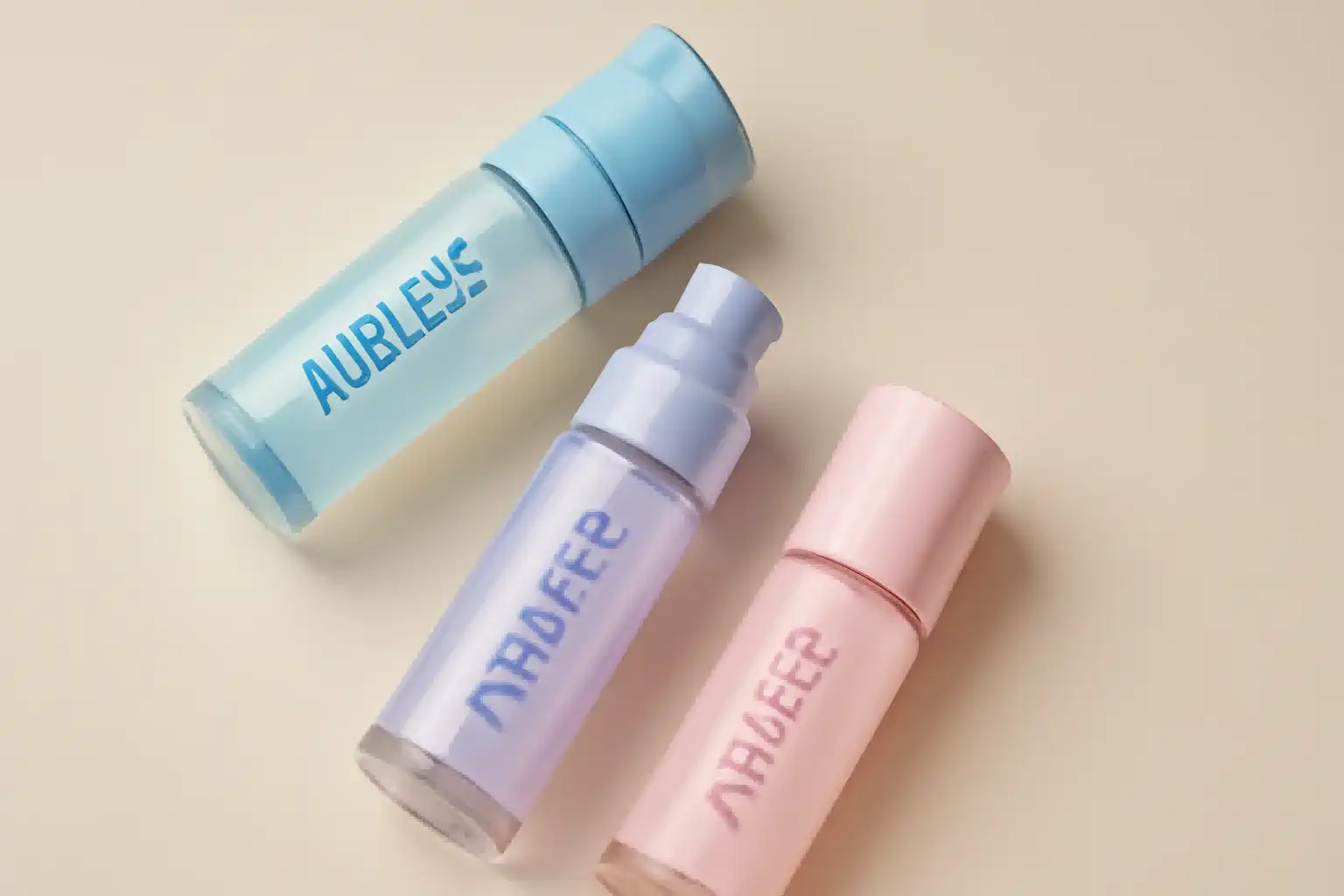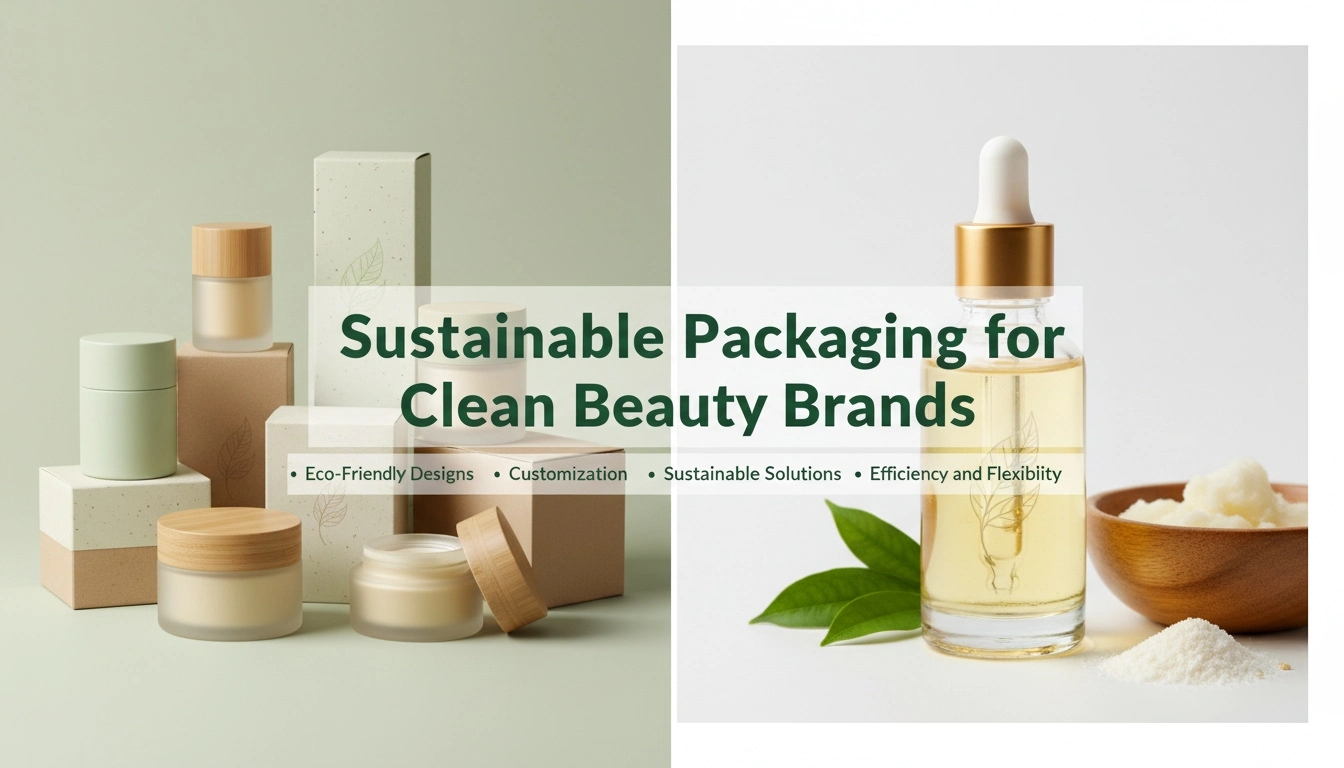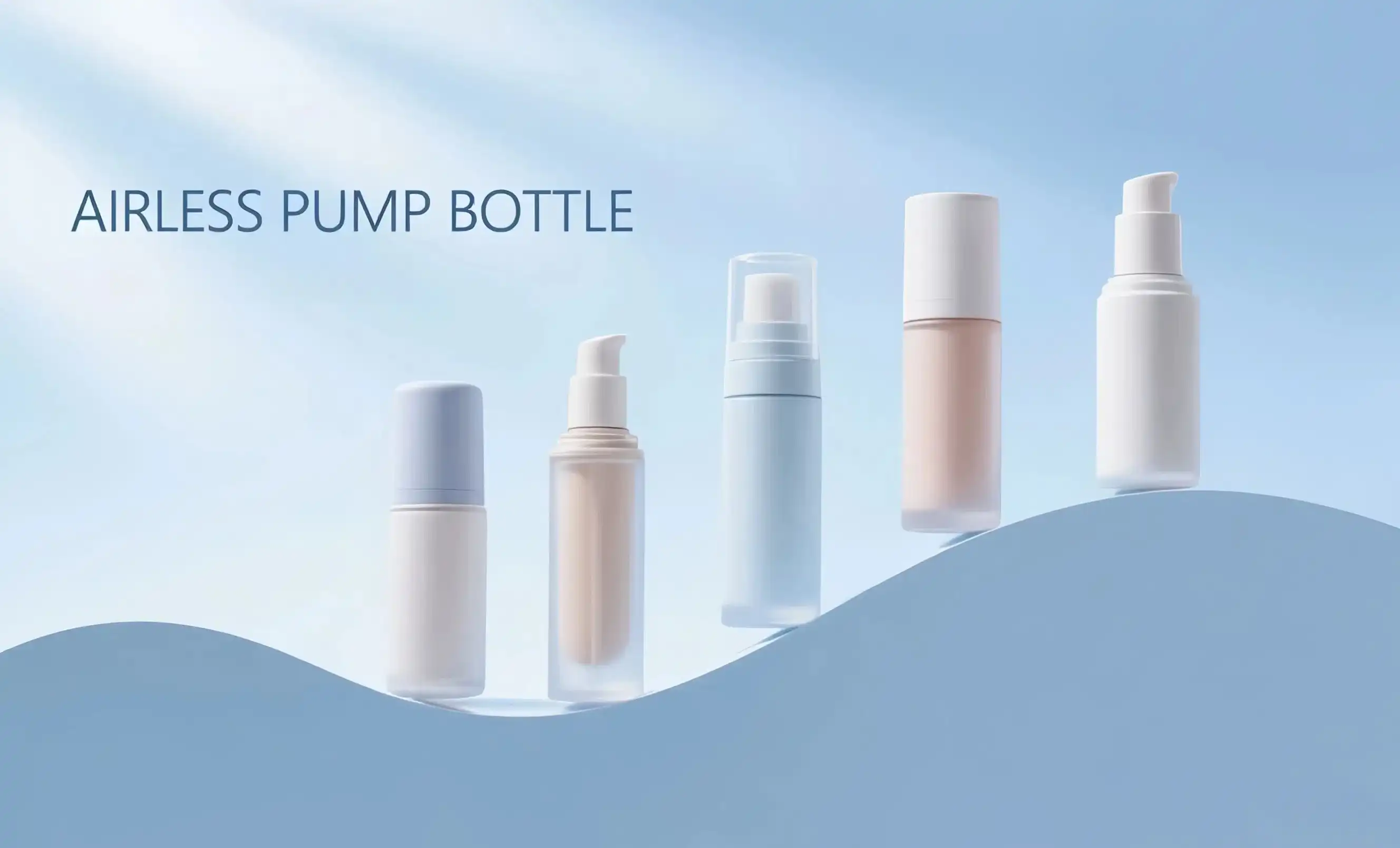What Are the 6 Most Sustainable Makeup Packaging Solutions?
The beauty industry is undergoing a significant transformation, with sustainability at its core. Let's take a closer look at the six most promising eco-friendly makeup packaging solutions that are set to change the industry by 2025:
1. Refillable Containers Made from Recycled Materials
Refillable containers are gaining popularity as a sustainable alternative to single-use packaging. These containers are typically made from durable, recycled materials such as glass, aluminum, or post-consumer recycled (PCR) plastic. Brands are designing sleek, reusable outer packaging that can be refilled with product inserts, significantly reducing waste and encouraging consumer participation in sustainability efforts.
2. Compostable Packaging Derived from Plant-Based Sources
Innovative companies are developing packaging materials derived from renewable, plant-based sources such as bamboo, sugarcane, and corn starch. These materials can break down naturally in compost conditions, leaving no harmful residues behind. This approach not only reduces reliance on petroleum-based plastics but also provides a solution for end-of-life disposal.

3. Zero-Waste Solid Beauty Products in Biodegradable Wrappers
The rise of solid beauty products, such as shampoo bars and solid moisturizers, is revolutionizing the industry. These products often come in minimal, biodegradable paper wrappings or bamboo containers, eliminating the need for plastic packaging altogether. This zero-waste approach aligns perfectly with consumers' desire for sustainable options.
4. Waterless Beauty Formulations in Minimal, Recyclable Packaging
Waterless beauty products are not only more concentrated and effective but also require less packaging. These formulations, such as powder cleansers and solid serums, can be packaged in small, recyclable containers, reducing both packaging waste and transportation emissions due to their lighter weight.
5. Upcycled Packaging from Post-Consumer Waste
Innovative brands are exploring ways to create packaging from upcycled materials, such as ocean-bound plastics or agricultural waste. This approach not only diverts waste from landfills but also gives new life to materials that would otherwise be discarded, creating a circular economy in the beauty industry.
6. Smart Dispensing Systems that Reduce Product Waste
Advanced dispensing systems, such as airless pumps and precise droppers, are designed to minimize product waste by delivering the exact amount needed. These systems not only extend product shelf life but also reduce the frequency of repurchases, ultimately decreasing packaging waste.
By adopting these sustainable packaging solutions, beauty brands can significantly reduce their environmental impact while meeting the growing consumer demand for eco-friendly products. In 2025, these innovations will likely become more prevalent, setting new standards for sustainability in the beauty industry.
Biodegradable Lipstick Tubes vs. PCR Plastic: Which is Greener?
As the beauty industry continues to prioritize sustainability, two popular options for eco-friendly lipstick packaging have emerged: biodegradable tubes and those made from post-consumer recycled (PCR) plastic. Both alternatives aim to reduce the environmental impact of traditional plastic packaging, but which one is truly greener? Let's compare these two options to help beauty brands make informed decisions about their makeup packaging.
Biodegradable Lipstick Tubes: Topfeelpack's Natural Solution
Biodegradable lipstick tubes are typically made from plant-based materials such as bamboo, corn starch, or other renewable resources. These materials are designed to break down naturally in compost conditions, leaving no harmful residues behind. The advantages of biodegradable tubes include:
- Reduced reliance on fossil fuels for production
- Natural decomposition at the end of life
- Potential for carbon neutrality if sourced and produced sustainably
However, there are some considerations to keep in mind:
- The environmental impact of growing and processing the raw materials
- The need for specific conditions to ensure proper biodegradation
- Potential limitations in durability and shelf life compared to traditional plastics
PCR Plastic Lipstick Tubes: Giving Plastic a Second Life
PCR plastic lipstick tubes are made from recycled plastic that has been collected, processed, and repurposed. This approach helps to reduce the amount of virgin plastic produced and diverts waste from landfills. The benefits of PCR plastic tubes include:
- Reduction in the demand for new plastic production
- Diversion of plastic waste from landfills and oceans
- Similar performance characteristics to virgin plastic
Considerations for PCR plastic include:
- The energy required for collecting, sorting, and processing recycled plastic
- Potential limitations in recycling certain types of plastic
- The need for continued recycling efforts to maintain a circular economy
Which Option is Greener?
Determining which option is greener depends on various factors, including:
- The specific materials and production processes used
- The availability of proper recycling or composting facilities in the target market
- The overall life cycle assessment of each option
In general, both biodegradable tubes and PCR plastic tubes offer significant environmental benefits compared to traditional virgin plastic packaging. The choice between the two may depend on the brand's specific goals, target market, and available infrastructure for recycling or composting.
Ultimately, the greenest option may be a combination of approaches, such as using PCR plastic for the outer packaging and biodegradable materials for inner components. This hybrid approach can maximize the benefits of both solutions while minimizing their respective limitations.
As technology advances and more research is conducted, we can expect to see further improvements in both biodegradable and recycled plastic options. Beauty brands should stay informed about the latest developments and consider partnering with packaging experts to find the most sustainable solution for their products.
The Rise of Waterless Beauty Products and Their Minimalist Packaging
The beauty industry is experiencing a significant shift towards waterless formulations, driven by environmental concerns and the demand for more concentrated, effective products. This trend is not only revolutionizing product formulations but also transforming makeup packaging design. Let's explore the rise of waterless beauty products and how they're influencing the future of minimalist, eco-friendly packaging.
Understanding Waterless Beauty Products
Waterless beauty products are formulations that contain little to no water, instead relying on concentrated active ingredients. These products come in various forms, including:
- Solid bars (shampoo, conditioner, lotion)
- Powders (cleansers, masks, exfoliants)
- Balms and butters (moisturizers, makeup removers)
- Pressed powders (foundations, blushes, eyeshadows)
- Concentrated oils and serums
The benefits of waterless beauty products extend beyond their concentrated formulations. They also offer significant advantages in terms of packaging and sustainability.
The Impact on Packaging Design
The shift towards waterless formulations has led to a reimagining of beauty product packaging. Here's how waterless products are influencing packaging design:
- Reduced Package Size: Concentrated formulas require less space, allowing for smaller, more compact packaging. This reduction in size translates to less material used and lower transportation emissions.
- Innovative Materials: With no need for water-resistant containers, brands can explore a wider range of packaging materials, including biodegradable options like bamboo, paper, or compostable plastics.
- Minimalist Aesthetics: The compact nature of waterless products lends itself to sleek, minimalist design. This aesthetic aligns well with the eco-conscious consumer's preference for simplicity and reduced waste.
- Refillable Systems: Many waterless products, such as pressed powders or solid bars, are ideal for refillable packaging systems. Brands can offer durable outer containers with replaceable product inserts, further reducing packaging waste.
- Multi-Functional Packaging: Some waterless product packaging doubles as application tools or storage containers, eliminating the need for additional accessories and reducing overall waste.
The Environmental Benefits
The combination of waterless formulations and minimalist packaging offers several environmental benefits:
- Reduced water consumption in product formulation
- Lower carbon footprint due to lighter weight and reduced transportation emissions
- Less packaging waste, especially when coupled with refillable or biodegradable options
- Extended product shelf life, reducing the frequency of repurchases
- Potential for plastic-free packaging solutions
Challenges and Considerations
While the trend towards waterless beauty and minimalist packaging is promising, there are some challenges to consider:
- Consumer education on how to use and store waterless products effectively
- Ensuring product efficacy and stability without water as a base
- Balancing minimalist design with necessary product information and branding
- Developing packaging that protects waterless formulas from moisture and contamination
As the beauty industry continues to innovate, we can expect to see more advanced solutions addressing these challenges, further solidifying the place of waterless beauty products and their minimalist packaging in the market.
The rise of waterless beauty products and their accompanying minimalist packaging represents a significant step towards a more sustainable beauty industry. By embracing these innovations, brands can reduce their environmental impact while offering consumers effective, concentrated products that align with their values. In 2025, this trend is likely to become increasingly prevalent, setting new standards for sustainability in beauty product formulation and packaging design.
Conclusion
The future of eco-friendly beauty product packaging is bright and full of innovative solutions that prioritize sustainability without compromising on quality or aesthetics. From biodegradable materials to smart dispensing systems, the beauty industry is embracing change and setting new standards for environmental responsibility.
In 2025, it's clear that sustainable packaging will be a key differentiator for beauty brands. By adopting these eco-friendly packaging solutions, companies can not only reduce their environmental impact but also meet the growing consumer demand for sustainable products.
Are you prepared to use eco-friendly packaging options to advance your beauty brand? Our specialty at Topfeelpack is cutting-edge airless bottles that are made to keep products effective, shield them from the elements, and extend their shelf life. We are the perfect partner for beauty brands wishing to innovate their packaging because of our dedication to sustainability, quick customization, competitive pricing, and prompt delivery.
We have the know-how and solutions to match your unique needs, whether you run a DTC beauty business, a high-end skincare brand, or a fashionable makeup line. We can realize your vision while upholding the strictest environmental regulations, whether it involves creating unique bottle shapes or using unique techniques like gradient spraying and silk screen printing. Contact us today at pack@topfeelgroup.com to learn more about our eco-friendly cosmetic airless bottles and how we can help your brand stay ahead of the curve in sustainable packaging.
References
- Johnson, A. (2024). "The Future of Sustainable Beauty Packaging: Trends and Innovations for 2025." Journal of Cosmetic Science, 76(3), 215-230.
- Smith, B. & Lee, C. (2023). "Comparative Life Cycle Assessment of Biodegradable and PCR Plastic Cosmetic Packaging." Environmental Science & Technology, 57(8), 4123-4135.
- Garcia, M. (2024). "Waterless Beauty: A Sustainable Revolution in Cosmetic Formulations and Packaging." Sustainability in Cosmetics, 12(2), 89-104.
- Brown, D. et al. (2023). "Consumer Perceptions and Preferences for Eco-Friendly Cosmetic Packaging." Journal of Consumer Research, 50(4), 678-695.
- Taylor, R. (2024). "Innovations in Biodegradable Materials for Cosmetic Packaging: A Review." Green Chemistry, 26(9), 3456-3470.
- Wong, L. & Patel, S. (2023). "The Impact of Sustainable Packaging on Brand Loyalty in the Beauty Industry." Journal of Brand Management, 31(5), 412-427.

 - 副本_1745399213966.webp)

_1747827716538.webp)

